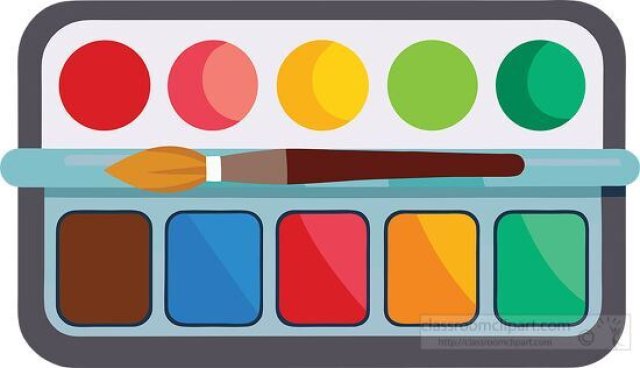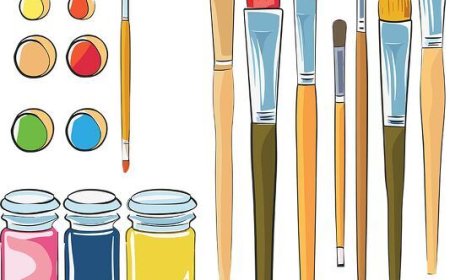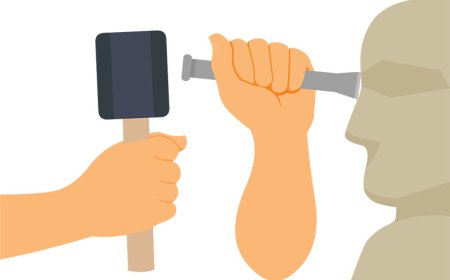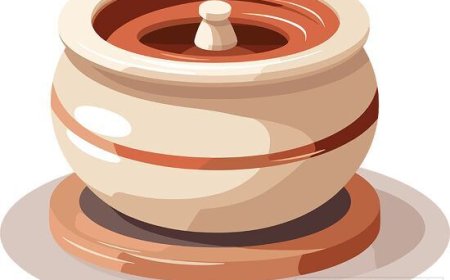Watercolor Painting for Students – History, Techniques, and How to Get Started
Discover the beauty of watercolor painting. Learn its history, techniques, tools, and how to create your own art with water and color.

💧🎨 Watercolor Painting: The Art of Light, Layers, and Flow
🎨 Introduction
Watercolor painting is one of the most magical and relaxing forms of visual art. Using just paint, water, and paper, artists can create soft, flowing images filled with color and light. From quiet landscapes to bold abstract designs, watercolor can capture emotion, movement, and detail in a unique way.
It’s also one of the oldest forms of painting, used by artists across many cultures and time periods. Because it’s easy to start and requires only a few tools, watercolor is a favorite for students and professionals alike. In this article, we’ll explore what watercolor painting is, where it came from, how it works, and how you can create your own watercolor masterpiece!
💧 What Is Watercolor Painting?
Watercolor painting uses water-soluble pigments that are mixed with water and applied to paper. The more water you use, the lighter and more transparent the color becomes. This allows artists to create soft washes of color, gentle shading, and layered effects.
Unlike acrylic or oil paints, which are thick and opaque, watercolor is known for its delicate and transparent qualities. It lets the white of the paper shine through, which makes it ideal for creating light-filled scenes like skies, lakes, and flowers.
Watercolor painting is often described as unpredictable—and that’s part of the fun! Because the paint moves with water, it can create beautiful textures and effects that are hard to get with other types of paint.
🖌️ Tools and Materials
You don’t need much to start watercolor painting. That’s one of the things that makes it great for students.
Basic watercolor supplies include:
- Watercolor paints – These come in pans (solid cakes of color) or tubes (soft paint squeezed out like toothpaste).
- Brushes – Soft, absorbent brushes with rounded tips are ideal. A size 6 round brush is a great beginner brush.
- Watercolor paper – This paper is thicker and textured so it can hold water without tearing.
- Water container – For rinsing brushes.
- Palette – A mixing surface, often with small wells to hold diluted colors.
- Paper towel or cloth – For blotting and cleaning brushes.
Optional tools: masking tape (to keep paper edges clean), salt (for texture effects), or masking fluid (to block off areas from paint).
🖼️ A Brief History of Watercolor
Watercolor has been used for thousands of years. Ancient Egyptians used watercolor-like materials in tomb paintings. Chinese and Japanese artists used ink and water on rice paper for scrolls, landscapes, and calligraphy.
In Europe, watercolor became popular in the 18th and 19th centuries. It was often used by scientists and explorers to record birds, plants, and natural scenes before photography existed. Artists like J.M.W. Turner and Winslow Homer used watercolor to capture glowing skies, ocean waves, and emotional scenes.
Today, watercolor is both a fine art and a fun hobby. From sketchbooks to galleries, watercolor can be seen in many creative places.
🎨 Watercolor Techniques
Watercolor artists use a variety of techniques to control how the paint flows and blends. Here are some of the most popular techniques you can try:
- Wet-on-wet – Applying paint to wet paper or wet paint. This causes colors to spread and mix smoothly, creating soft edges and dreamy effects.
- Wet-on-dry – Painting on dry paper. This gives more control and sharper lines.
- Dry brush – Using very little water. This creates texture and a rough look.
- Gradient or wash – Creating a smooth fade from dark to light by adding water as you paint.
- Lifting – Using a paper towel or dry brush to remove paint while it's still wet, making highlights or corrections.
- Splattering – Flicking paint off a brush to create fun texture and energy.
Experimenting with these techniques helps young artists find their own style.
🧑🎨 Why Watercolor Is Great for Students
Watercolor is perfect for learning because it’s:
- Affordable – Fewer materials are needed compared to oil or acrylic.
- Fast – Paint dries quickly, so you can complete a painting in one sitting.
- Flexible – Easy to change or layer.
- Fun to experiment with – The flowing nature encourages creativity and discovery.
Students can use watercolor for class projects, personal sketchbooks, greeting cards, or even science illustrations.
🧬 Watercolor in Art Education
In art class, watercolor fits into the Visual Arts strand of education. According to the National Core Arts Standards, watercolor painting supports:
- Creating – Students explore materials, techniques, and ideas to make original artwork.
- Presenting – Students can plan, mount, and explain their work to others.
- Responding – Students describe, analyze, and interpret their own and others’ watercolor paintings.
- Connecting – Students learn how watercolor reflects personal and cultural stories.
Watercolor helps students build fine motor skills, patience, decision-making, and self-expression.
👩🎨 Famous Watercolor Artists
Many famous artists have used watercolor to explore light, mood, and nature.
- J.M.W. Turner (England) – Known for dramatic landscapes and sea scenes with glowing color.
- Winslow Homer (USA) – Painted ocean life, boats, and waves in watercolor.
- Georgia O’Keeffe (USA) – Used watercolor early in her career to explore abstract shapes and desert landscapes.
- John Singer Sargent (USA) – Famous for his lively portraits and travel sketches.
- Zhang Daqian (China) – A master of traditional ink and watercolor painting in Chinese art.
🖼️ How to Make Your Own Watercolor Painting
Want to give watercolor a try? Here’s a simple step-by-step activity for beginners:
1. Set up your space. Use a flat surface with good lighting. Tape down the edges of your watercolor paper.
2. Choose your subject. Start with something simple—a tree, sunset, or your favorite fruit.
3. Sketch lightly. Use a pencil to draw the basic outline.
4. Start painting light to dark. Watercolor is transparent, so lighter colors should be added first.
5. Let layers dry. Between layers, let the paper dry completely before adding new colors.
6. Add details. Use less water and a small brush for finer details.
7. Sign your work! Add your name and date in a corner when you’re done.
Remember: It’s okay to make mistakes. Watercolor is all about learning, experimenting, and having fun.
🧠 Key Vocabulary
| Word | Definition |
|---|---|
| Watercolor | A type of paint mixed with water, known for transparency |
| Pigment | The colored part of paint |
| Wash | A thin layer of watercolor paint |
| Wet-on-wet | A painting method where wet paint is applied to wet paper |
| Dry brush | A technique using very little water for texture |
| Palette | A surface used for mixing paint |
| Lifting | Removing paint from paper using a brush or cloth |
🌟 Interesting Facts
- Watercolor paint can be reactivated with water even after it dries!
- Famous scientists like John James Audubon used watercolor to draw birds and plants.
- Some artists use salt in wet watercolor to create amazing starburst textures.
- Ancient watercolor paintings are still visible in Egyptian tombs over 3,000 years old.
- Watercolor pencils allow artists to draw and then add water to turn lines into paint.
📚 Key Takeaways
- Watercolor painting uses water-based pigments to create soft, flowing art.
- It has a long history and is loved by artists worldwide for its beauty and unpredictability.
- Students can use watercolor to explore texture, color, and creativity.
- Simple materials and easy techniques make it perfect for beginners.
🎯 Interactive Quiz
1. What makes watercolor paint unique compared to acrylic or oil paint?
A) It glows in the dark
B) It’s made of chalk
C) It’s thin and transparent
D) It smells like fruit
2. What is the “wet-on-wet” technique?
A) Painting with wet socks
B) Painting on wet paper for soft effects
C) Dipping paper in water
D) Using wet brushes to clean paper
3. Which surface is best for watercolor?
A) Tissue paper
B) Newspaper
C) Watercolor paper
D) Notebook paper
4. What does a dry brush technique create?
A) Smooth colors
B) Texture and rough effects
C) Splashes
D) Wet puddles
5. What is the purpose of lifting paint in watercolor?
A) To clean the brush
B) To add more pigment
C) To erase or create highlights
D) To make the painting darker





















































